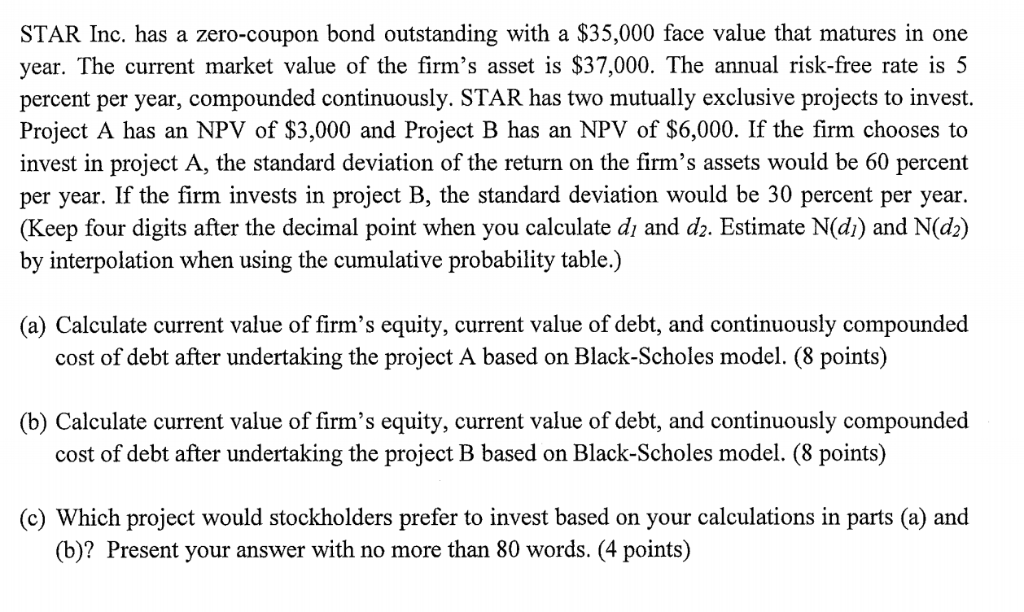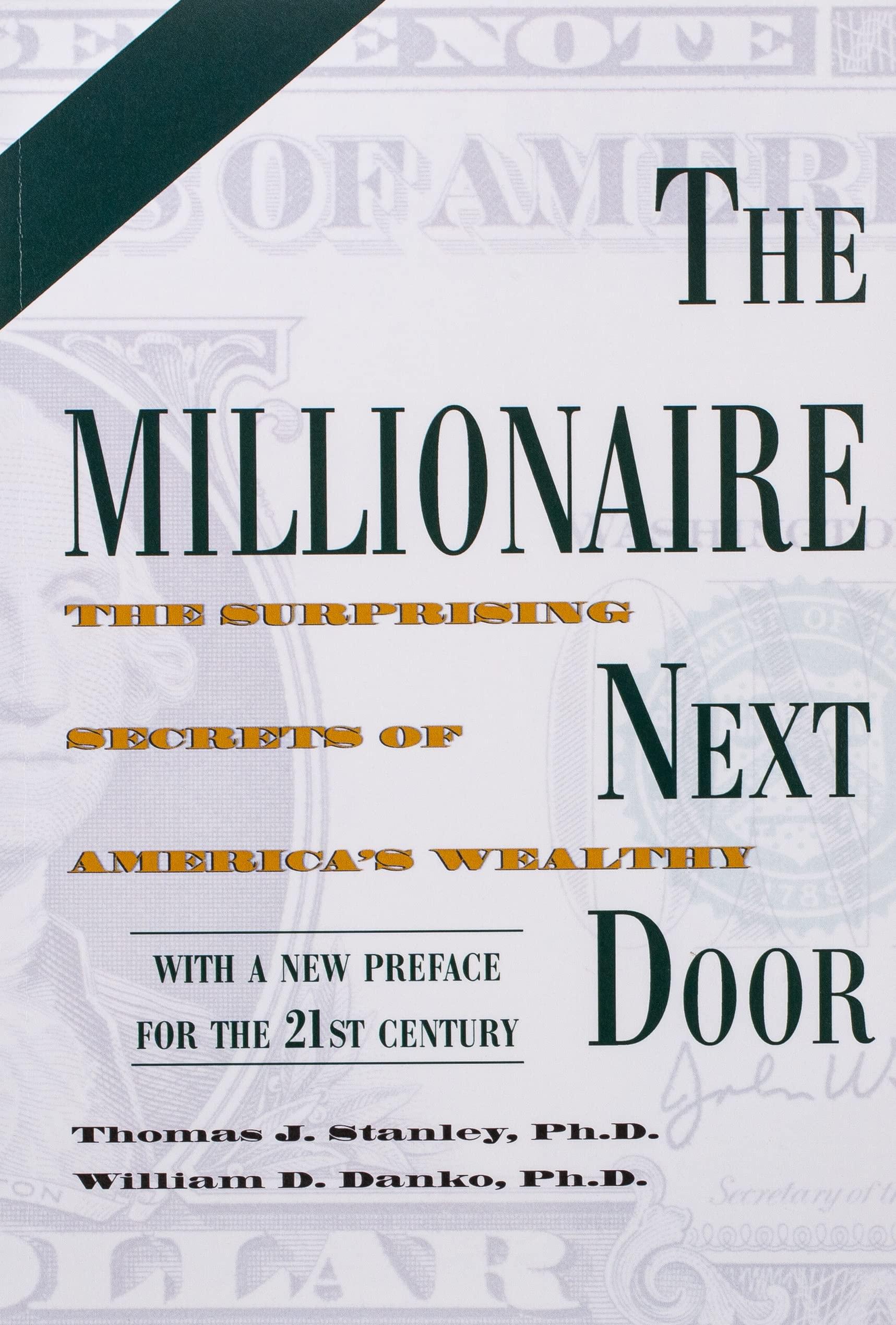
STAR Inc. has a zero-coupon bond outstanding with a $35,000 face value that matures in one year. The current market value of the firm's asset is $37,000. The annual risk-free rate is 5 percent per year, compounded continuously. STAR has two mutually exclusive projects to invest. Project A has an NPV of $3,000 and Project B has an NPV of $6,000. If the firm chooses to invest in project A, the standard deviation of the return on the firm's assets would be 60 percent per year. If the firm invests in project B, the standard deviation would be 30 percent per year (Keep four digits after the decimal point when you calculate d and d2. Estimate N(d) and N(d2) by interpolation when using the cumulative probability table.) (a) Calculate current value of firm's equity, current value of debt, and continuously compounded cost of debt after undertaking the project A based on Black-Scholes model. (8 points) (b) Calculate current value of firm's equity, current value of debt, and continuously compounded cost of debt after undertaking the project B based on Black-Scholes model. (8 points) (c) Which project would stockholders prefer to invest based on your calculations in parts (a) and (b)? Present your answer with no more than 80 words. (4 points) STAR Inc. has a zero-coupon bond outstanding with a $35,000 face value that matures in one year. The current market value of the firm's asset is $37,000. The annual risk-free rate is 5 percent per year, compounded continuously. STAR has two mutually exclusive projects to invest. Project A has an NPV of $3,000 and Project B has an NPV of $6,000. If the firm chooses to invest in project A, the standard deviation of the return on the firm's assets would be 60 percent per year. If the firm invests in project B, the standard deviation would be 30 percent per year (Keep four digits after the decimal point when you calculate d and d2. Estimate N(d) and N(d2) by interpolation when using the cumulative probability table.) (a) Calculate current value of firm's equity, current value of debt, and continuously compounded cost of debt after undertaking the project A based on Black-Scholes model. (8 points) (b) Calculate current value of firm's equity, current value of debt, and continuously compounded cost of debt after undertaking the project B based on Black-Scholes model. (8 points) (c) Which project would stockholders prefer to invest based on your calculations in parts (a) and (b)? Present your answer with no more than 80 words. (4 points)







